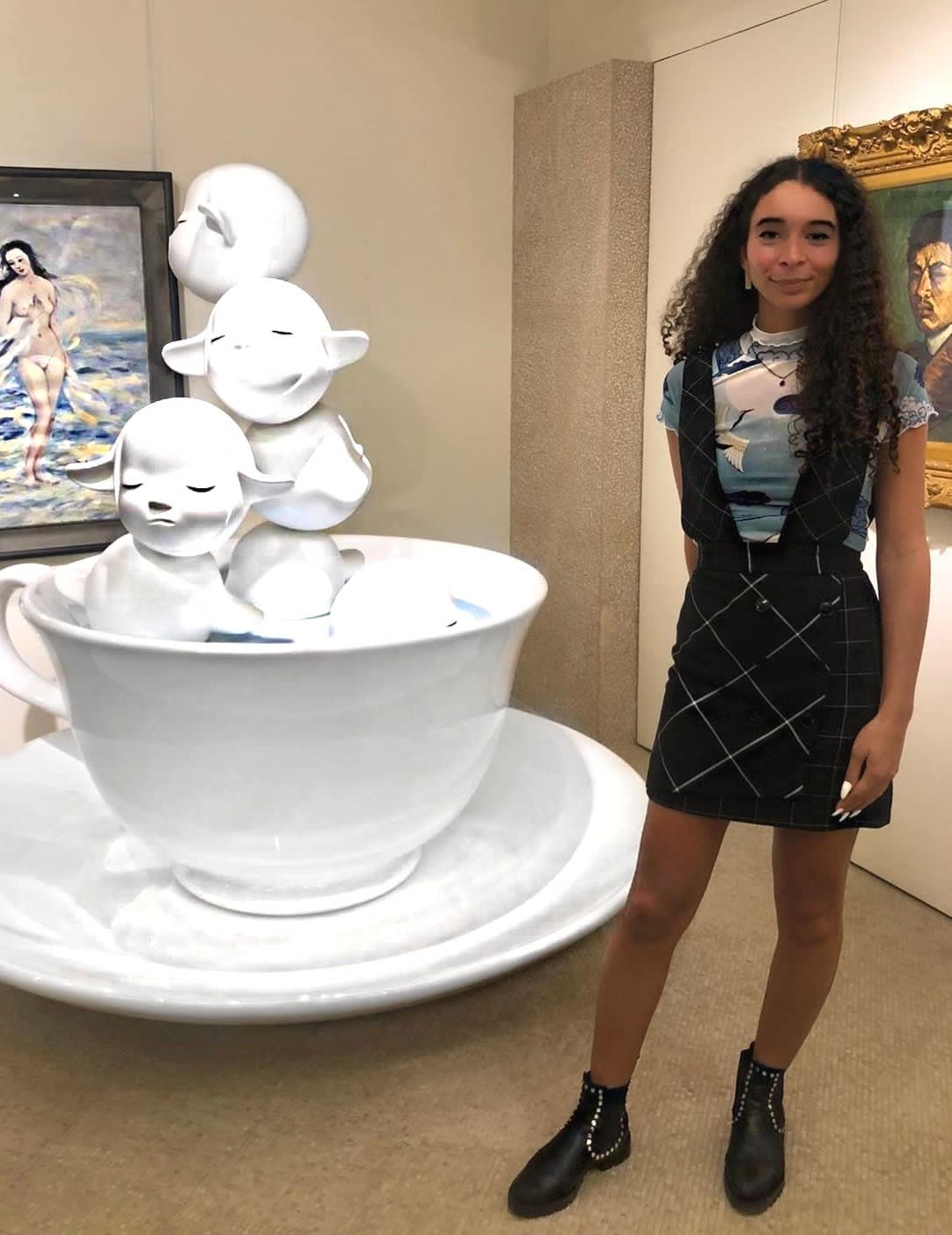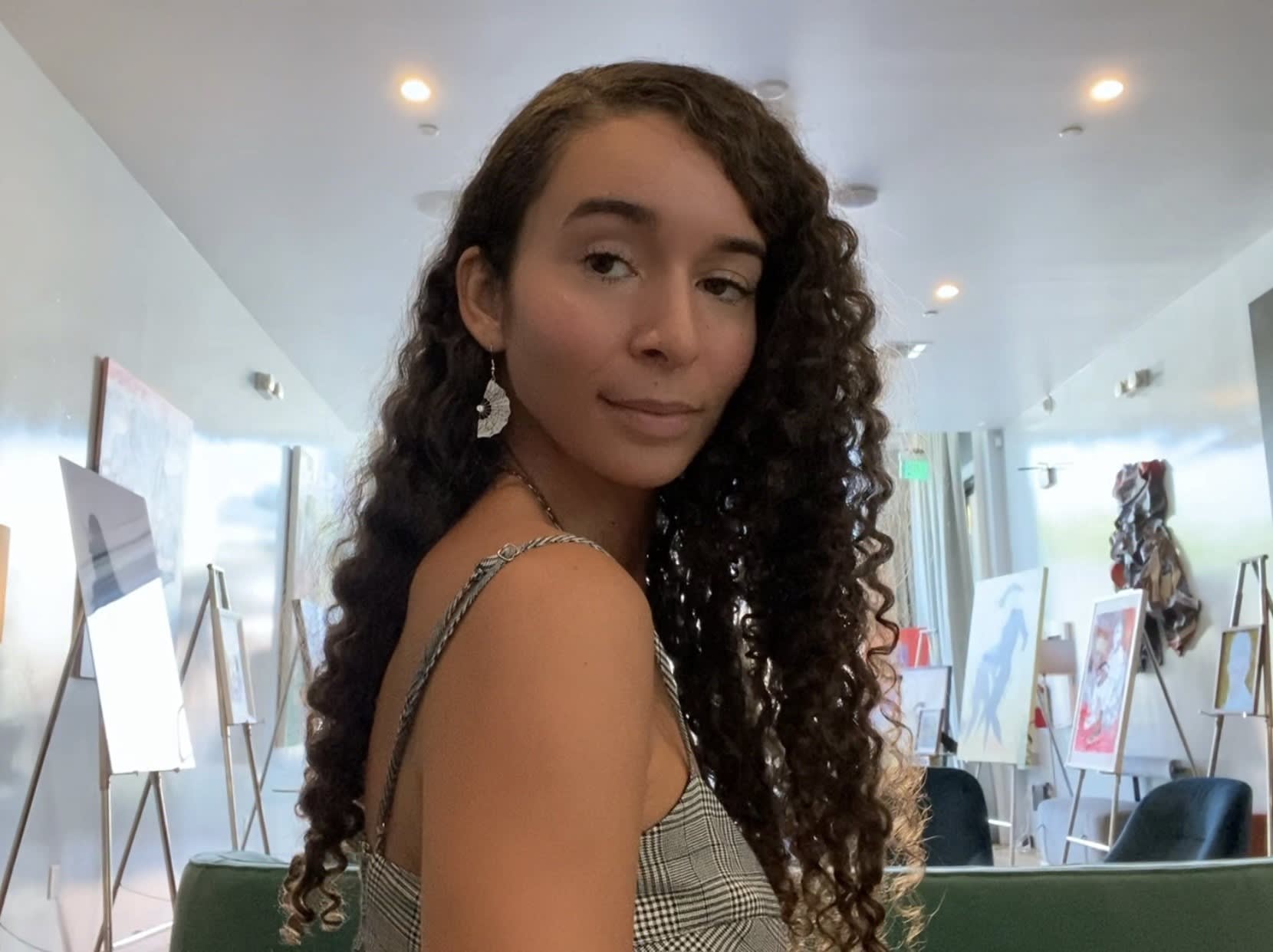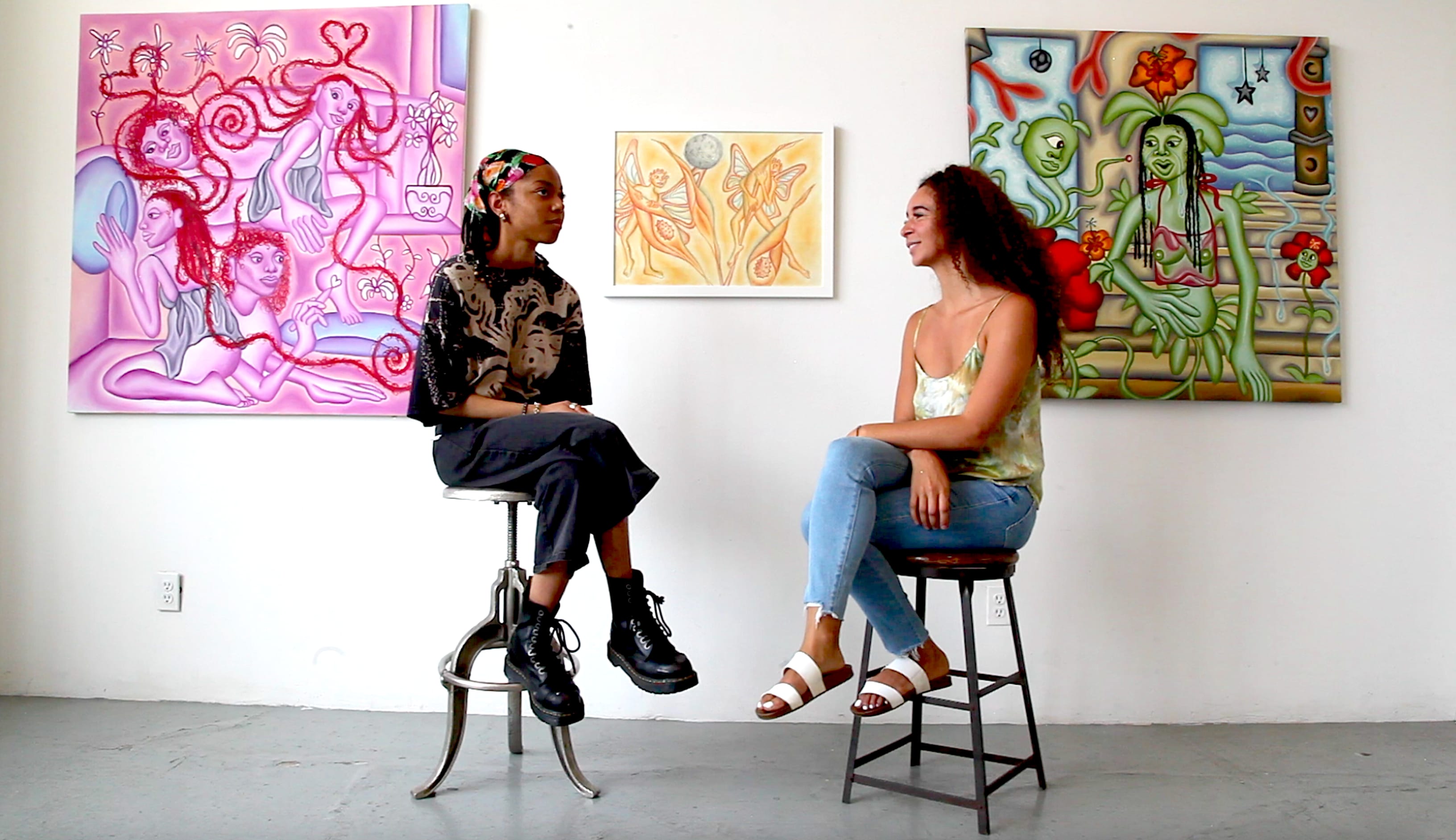
Alumnus Storm Ascher (BFA 2018 Visual & Critical Studies).
Alumnus Storm Ascher (BFA 2018 Visual & Critical Studies) is seemingly everywhere right now. Her Superposition gallery is thriving, she was recently featured in the New York Times, and Forbes put her on its recent 30 Under 30 list in the Arts & Style category. All this groundswell of press felt like the opportune moment to share her Q&A article from the fall/winter edition of the College's Visual Arts Journal.
Nomadic living is not for the faint of heart.
Thriving in the uncertainty of leaping from place to place requires a good measure of agility, organization and personal courage. It’s a stance that appeals to curator, artist and writer Storm Ascher (BFA 2018 Visual & Critical Studies), who in 2018 founded Superposition, a roving art gallery that has produced winning pop-up exhibitions in cities like Los Angeles, Miami and New York.
Ascher honed the concept for Superposition during her senior year at SVA, when she produced a film that investigated the role that traditional brick-and-mortar art galleries play in rising rents and real-estate speculation. She later studied the pragmatics of running a gallery at Sotheby’s Institute of Art’s master’s in art business program.
“I wanted to work in art without feeling like a gentrifier,” she says, “and I wanted to work with emerging artists in a socially conscious way.”
A nomadic gallery, while it has logistical challenges, not only avoids the costs incurred by renting and maintaining a space—it is an effective platform for showcasing under-the-radar artists in various regions, she says. Since its first show, Superposition has featured over 50 artists of diverse backgrounds. They include photographer Ed Maximus, painter Ludovic Nkoth, multimedia artist Haleigh Nickerson, as well as fellow SVA alumni Ryan Cosbert (BFA 2021 Fine Arts), John Rivas (BFA 2019 Fine Arts) and Sinjun Strom (BFA 2017 Photography and Video), and current BFA Fine Arts student Bryan Fernȧndez.
The pandemic has altered Ascher’s travel agenda, grounding her, for the most part, in New York. Like most galleries, Superposition has had to bolster its online presence, at superpositiongallery.com. Thankfully, adaptability is the nomad’s métier. When we corresponded, in midsummer, the gallery had recently concluded a solo exhibition of painter Dodi King’s work, in Manhattan, and Ascher was busy planning an August auction to raise funds for the Eastville Historical Society, in Sag Harbor, New York, as well as working on an assignment for Cultured magazine, to which she regularly contributes.
What first inspired your idea for a nomadic gallery?
I was studying city branding in Barcelona, Spain. We did a case study on the Olympics, which commissioned a lot of public art and new businesses to impress the tourists. Historically, art has been used to gentrify neighborhoods, and the community goes from an OG arts district to yuppie heaven. Being nomadic replicates the journey of the artist, who gets priced out of their studio or home because of the culture they produce for their own communities.
On another note, I was working in galleries for a few years throughout college in New York and Los Angeles, and it always baffled me how thousands of square footage saw very little foot traffic besides the opening receptions and specific events. So that formed the base model of having a short run of shows and focusing on the celebration, bringing everyone together to congratulate the artists for putting their work out there.

Alumnus Storm Ascher (BFA 2018 Visual & Critical Studies)
Why did you name your gallery “Superposition”?
Superposition is a physics term. It means that an object only exists when observed at that moment. I’ve been going by the phrase ‘’everywhere and nowhere” to fit in with the theme of being nomadic.
You list “building community” and increasing equity among your goals. How does having a nomadic gallery help you achieve that?
Many of the artists we work with are centralized—their programming is at school or at a residency—so working with Superposition makes it so that new audiences can learn about them while they work with the same gallery.
Can you tell us about your first exhibition and what you learned from it?
Our inaugural show was at a studio in downtown L.A. It was a consistent pop-up space and when we arrived the renters before us had not left and we had to help them load out and repaint everything before installing during the time we were originally allotted.
For my first show I was so steadfast on making it look as seamless and effortless as possible. Luckily the artists and my friends came to help. True team effort. I learned that I can’t expect a space that isn’t mine to be show ready—there’s always something to adjust or fix.
How do you scout for exhibition space?
Originally I would look on sites like Peerspace, Popshop and Appear Here. But now people usually reach out to me and tell me about a space that is looking to be activated.
What makes for a good gallery space?
At first, because I wanted to be taken seriously, white walls and good lighting were the most important. But now I'm more into experimenting with unique spaces that wouldn’t normally be seen as a gallery.
Do you negotiate with the owners of a space yourself?
Yes.
What stage of the curatorial practice thrills you most?
Hanging the show. It’s like making a collage of all my favorite people and their work.
How does running a gallery affect your own artistic practice?
I was painting a lot less at first but now that I’m done with my master’s program at Sotheby’s, I’ve been able to use [what had previously been time for my coursework as] studio time.
What would you say have been your most successful exhibitions?
“Labor of Love” for Frieze LA [held in February 2020] was an amazing turnout because everyone flew in from all over the country. It was our peak before the pandemic.
Might you expand your operations beyond L.A., New York and Miami?
Yes! I’m looking toward other countries and want to participate in traveling art fairs.
Would you turn down the opportunity to operate in a permanent space?
A lot of factors would have to be accounted for before agreeing to that because our main mission is to expand and contract.
How did the COVID-19 pandemic affect your operations?
We were already operating heavily online, so the transition was easier for Superposition than other spaces, I would imagine. Our sales were steady, too!
Tell us about the show(s) you’re currently working on.
Superposition is partnering with Artmatic Art Advisory in New York to bring together emerging and established artists for a fall exhibition titled “House of Crowns,” which will be sponsored by Phillips.
What is your grand vision for Superposition?
For it to be considered a movement.
Anne Quito (MFA 2014 Design Criticism) is a journalist and design critic based in New York City. She wrote Mag Men: Fifty Years of Making Magazines (Columbia University Press), a book about the glory days of magazine design as told by Walter Bernard (1961 Graphic Design) and Milton Glaser.
This interview has been condensed and edited. A version of this interview appears in the fall/winter 2021 Visual Arts Journal.

Alumnus Storm Ascher (BFA 2018 Visual & Critical Studies)

